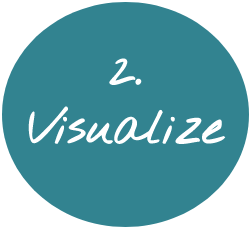
Think In Decision-Making Wavelengths
Many of you may know about the influential book Team of Teams: New Rules of Engagement for a Complex World that was published in 2016. General McChrystal and his book have had an enormous impact on how leaders think about teaming and collaboration. In particular, McChrystal’s book inspired Anthony Kim and Alexis Gonzales-Black and how they think about teams and decision-making in their own book, The NEW School Rules: 6 Vital Practices for Thriving and Responsive Schools.
One core theme of Team of Teams, and this interview of Stanley McChrystal by Joe Mariani of Deloitte, is the idea of developing a shared consciousness across your organization. As McChrystal states, “The challenge for any organization is that the tasks at each level need to be synced together.” He describes, and the visual below makes clear, that people at different levels of an organization have very different ways of thinking about work and making decisions, ranging from strategic to operational and tactical.
 1. Grow the garden, not the carrot
1. Grow the garden, not the carrot
I often work with teams who want to redesign some substantial system (from redesigning how teaching and learning happens in 20 schools to redesigning how communication happens across 10,000 employees). In many of these strategy sessions the executive leaders in the organization get caught up thinking in a tactical wavelength (what will this look like day to day? what specific actions will this person be taking? etc.). I have found the visual below helpful for thinking about which decisions we need make in a strategy session and which decisions we need to acknowledge will change on a daily (or hourly) basis and therefore need to be made by people on the “frontlines.”
As McChrystal shares, “The gardener’s primary responsibility is to create the garden. It is not to grow things. If the senior leaders are focused on the growing of each thing, they are not going to spend their time making sure the garden is protected and watered. That is what I find in organizations now: Those leaders who step back, create that environment, and make very few specific decisions get a much better outcome.”
It’s our job as leaders to be very clear about the goals we’re aiming for and the environment we believe will support these goals. And it’s our job to authorize others to make decisions that will help those environments evolve and bear fruit.
2. The wavelength of tasks

Image Credit: Deloitte University Press
 3. Check your wavelength
3. Check your wavelength
In your next meeting, ask yourself if you are thinking at a tactical, operational, or strategic level. How does this wavelength of thinking match up with your role on that project (worker, manager, or executive)? If there’s a mismatch between your thinking and your role, shift to asking questions at your wavelength. Once you practice this skill for yourself you might begin to help others recognize the wavelength they are operating in. If you want to learn more about shared consciousness and decision delegation, check out Insights from The McChrystal Group and The NEW School Rules: Decision Making. You can also join me in conversation at @kearaduggan.
This blog post was originally published on The KikiBrief.
About Keara Mascareñaz
Keara is a Managing Partner at Education Elements who focuses on how to build and scale a culture of innovation in large systems, how to create national communities of collaboration, and how to keep laughing when pursuing daunting, large-scale changes. She was lucky to collaborate with co-authors Alexis Gonzales-Black and Anthony Kim to design the website and toolkit for The NEW School Rules: 6 Practices for Responsive and Thriving Schools.





